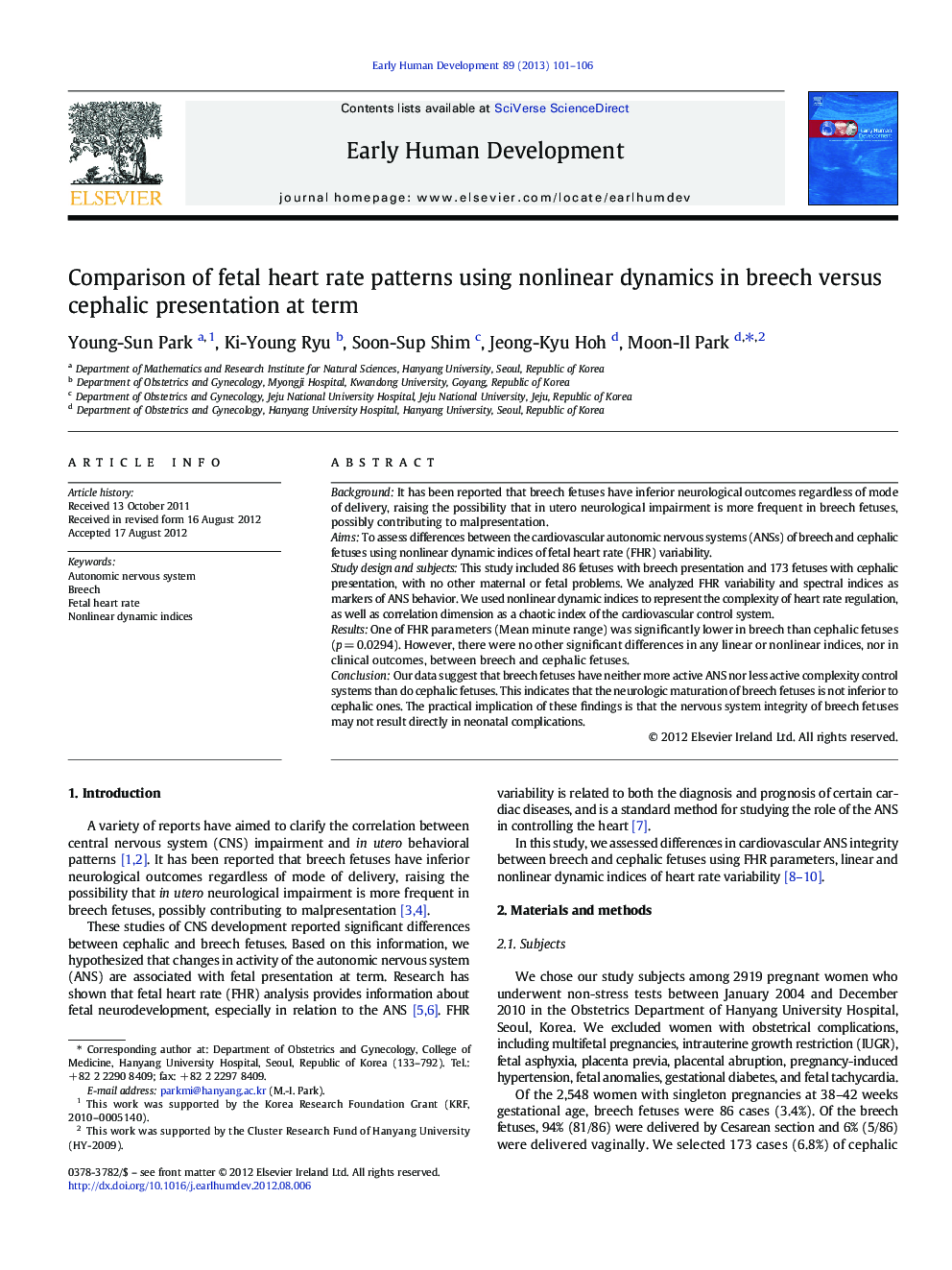| Article ID | Journal | Published Year | Pages | File Type |
|---|---|---|---|---|
| 3916738 | Early Human Development | 2013 | 6 Pages |
BackgroundIt has been reported that breech fetuses have inferior neurological outcomes regardless of mode of delivery, raising the possibility that in utero neurological impairment is more frequent in breech fetuses, possibly contributing to malpresentation.AimsTo assess differences between the cardiovascular autonomic nervous systems (ANSs) of breech and cephalic fetuses using nonlinear dynamic indices of fetal heart rate (FHR) variability.Study design and subjectsThis study included 86 fetuses with breech presentation and 173 fetuses with cephalic presentation, with no other maternal or fetal problems. We analyzed FHR variability and spectral indices as markers of ANS behavior. We used nonlinear dynamic indices to represent the complexity of heart rate regulation, as well as correlation dimension as a chaotic index of the cardiovascular control system.ResultsOne of FHR parameters (Mean minute range) was significantly lower in breech than cephalic fetuses (p = 0.0294). However, there were no other significant differences in any linear or nonlinear indices, nor in clinical outcomes, between breech and cephalic fetuses.ConclusionOur data suggest that breech fetuses have neither more active ANS nor less active complexity control systems than do cephalic fetuses. This indicates that the neurologic maturation of breech fetuses is not inferior to cephalic ones. The practical implication of these findings is that the nervous system integrity of breech fetuses may not result directly in neonatal complications.
